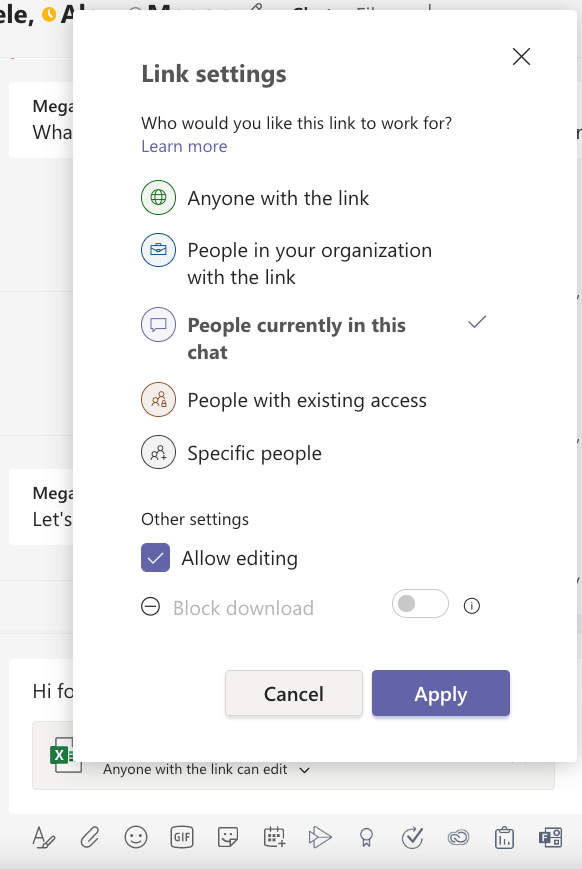Choose the permissions you want for files in chat
Microsoft Teams offers some cool features when it comes to sharing files in private chat. Private chat is when you click Chat in the desktop app bar and start or continue a conversation with one or multiple people. I'm not talking about using anything from the Teams app in Teams here. For a video overview and demo of this topic, press play below.
Share a file
Sharing files in private chat in Teams is great. Except, don't let it be a crutch. Teams is meant to be a collaboration tool among teammate; group chat is not the way to do that, especially when it comes to sharing files. The main reason for that is because when someone shares a file, it's uploaded to a special folder in their OneDrive for Business called Microsoft Teams Chat Files. The file can't just be hosted in some "ether" somewhere. You need to control it somehow. And OneDrive is how you control it. I've seen too many people use private chat as a crutch and you shouldn't because if you share files there, the person who shares the files might leave. If they do, their files go bye-bye. The point is, for teamwork, use Teams. For one-off stuff, use private chat.
To share a file, open Chat from the Teams app bar, find the appropriate message, and click the paper clip [attach] icon. Upload the file from your computer. Now, notably, you can choose the permissions. Select from the below options. If you choose People currently in this chat, just know that this is a snapshot-in-time permission setup. If you add or remove people from the chat, the file permissions remains the same. Another reason to use a Team! A Team's file permissions are fluid with the Team itself!

Where the file lives
If you're not aware, all files shared in a Teams chat are uploaded to the OneDrive for Business of the person who uploaded the file. That means even if you click the Files tab of an ongoing private chat in Teams and you see dozens or hundred of files, if those files were uploaded by different people, each file is uploaded and stored in the Microsoft Teams Chat Files folder in each person's respective OneDrive for Business. If you're a guest in a tenant, you'll notice you can't upload files; this is why: you don't have a OneDrive to save files to in their system.
Once a files is uploaded to that location, you can always remove or expand permissions, which is actually quite liberating. It means no matter who has access to the chat, you can still manage who can access that file. (Wait? Different people than are in the chat can see the file? What do I do!? See below...)
Control the permissions of the file
Once you've shared the file, you might want to change the permissions. Even if you change the membership of the chat, the permissions of the file don't change. That's right! You have responsibility! I know, responsibility is hard.
To do that, open your OneDrive for Business app from Office.com (the blue cloud). Open the folder where the file lives (almost certainly in the Microsoft Teams Chat Files folder). Click ⋮ Show actions > Manage access. From here, you have options to update the permissions using internal names or external email addresses. Update the permissions accordingly. If your chat removed someone, remove that person. If it added people, add those people. Or don't. All of this is completely up to you.

Wrap up
File permissions in chat is complex. It shouldn't be, but it really doesn't matter what tool you use. You could be all about Dropbox or Box mixed with Slack or Skype and the same issue persists. Basically, you're asking for a bit of a complex solution where certain people that you chat with also have access to files you share. It's convenient, but requires at least a little bit of expertise when you use the feature.
Otherwise you're going to end up at the end of this post wishing you had read the whole thing before you shared stuff with people you shouldn't have.





Obviously you have an opinion, so share it!